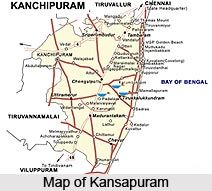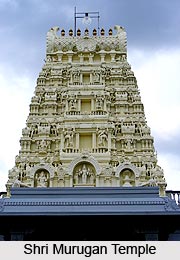 Kansapuram is located in Virudhunagar District in the Indian state of Tamil Nadu. It is a village situated at the foothills of Western Ghats mountain range. The town is located at a distance of 2 kilometres on the southern side of Koomapatti and 7 kilometres away on the western side of Watrap. Kansapuram is connected via road to the district headquarters of southern Tamil Nadu which includes Virudhunagar, Madurai and Tirunelveli.
Kansapuram is located in Virudhunagar District in the Indian state of Tamil Nadu. It is a village situated at the foothills of Western Ghats mountain range. The town is located at a distance of 2 kilometres on the southern side of Koomapatti and 7 kilometres away on the western side of Watrap. Kansapuram is connected via road to the district headquarters of southern Tamil Nadu which includes Virudhunagar, Madurai and Tirunelveli.
Geography of Kansapuram
Kansapuram has a semi arid tropical monsoon type of climate. The temperature varies from 20°C to 37°C. The town has low humidity level but experiences high mean temperature. The hottest months here are April, May and June. During the month of June the southwest monsoon sets in and continues till August. The northeast monsoon during October, November and December brings in heavy rainfall in Kansapuram.
The town is mainly resided by people of Thevar and Maravars community. People of other castes such as Rajus, Dalits, Pillai and Nadar also inhabit the region. Muslim and Christian families also live in Kansapuram.
Economy of Kansapuram
Agriculture is the main source of income for the people of Kansapuram. Some of the major crops produced here are paddy, cotton and coconut. The town is located on the banks of Arjuna River which is main source of water. The Pilavakal dam has been constructed for irrigation purpose. Paddy and cotton are harvested twice in a year, one during the season of Kaalam in the month of Thai and another during the season of Kodai. The region has huge areas of coconut groves and orchards.
Educational Institutions in Kansapuram
Kansapuram has set up many schools and colleges for the growth of education among children. Panchayat Union Middle School and R.C. School are the two important schools here. The Kalasalingam University is located in Krishnankoil almost 8 kms away from Kansapuram. An engineering college, teacher training institute, pharmacy college, polytechnic, college of business administration and ITI has been established under the university.
Pilgrimage Centres in Kansapuram
 Few temples are located in and around Kansapuram. Shri Sundara Mahalingam Temple also called Sathuragiri Malai or Thaani Paarai is an important shrine of the town. Devotees flock the temple during the Aadi amavasai i.e. the no moon day in the Tamil month of Aadi. The Gopala Swamy Malai is another well known temple situated atop a small hillock. It houses an idol of Lord Krishna, Rukmini and Sathyabhama. The shrine is almost 29 kms away from Kansapuram located on NH 47. A Shiva Cave Temple known as Motta Malai is located at a distance of 16 Kms from Kansapuram. Another popular temple, Srivilliputhur Andal Temple dedicated to Lord Vishnu is in Kansapuram. It is one of the 108 Divya Desams. The Madavar Vilagam Vaidyanathar Temple built in the town houses a monolithic image of Nataraja. It is almost six feet in height. The Kattalagar Koil located almost 9 kms away is on the eastern side of Srivilliputhur. The Theertha Thotti water flows by this shrine all through the year. Apart from this there are few temples located here such as
Few temples are located in and around Kansapuram. Shri Sundara Mahalingam Temple also called Sathuragiri Malai or Thaani Paarai is an important shrine of the town. Devotees flock the temple during the Aadi amavasai i.e. the no moon day in the Tamil month of Aadi. The Gopala Swamy Malai is another well known temple situated atop a small hillock. It houses an idol of Lord Krishna, Rukmini and Sathyabhama. The shrine is almost 29 kms away from Kansapuram located on NH 47. A Shiva Cave Temple known as Motta Malai is located at a distance of 16 Kms from Kansapuram. Another popular temple, Srivilliputhur Andal Temple dedicated to Lord Vishnu is in Kansapuram. It is one of the 108 Divya Desams. The Madavar Vilagam Vaidyanathar Temple built in the town houses a monolithic image of Nataraja. It is almost six feet in height. The Kattalagar Koil located almost 9 kms away is on the eastern side of Srivilliputhur. The Theertha Thotti water flows by this shrine all through the year. Apart from this there are few temples located here such as
* Shri Valla Palathu Karuppasamy Temple
* Shri Mariamman Swamy Temple
* Shri Nallathangal Temple
* Shri Murugan Temple
* Shri Muniyandi Swamy Temple
* Shri Mangammaal Temple
* Shri Vella Pillaiyar Temple
* Shri Kaliamman Temple
Besides these Hindu temples there are few churches and mosques in Kansapuram. Every year the village celebrates the Thevar Guru Pooja on 30th October.
Tourists Places in Kansapuram
There are several tourist spots in and around Kansapuram that are worth visiting. Meenvetti Paarai located on the way to Kattalagar Koil is a calm and serene place to visit.
The Pilavakkal dam constructed in the village for irrigational purpose is an ideal spot for picnics. Another picturesque spot in Kansapuram is the Sathuragiri Hills. It houses two temples, Sundra Mahalingam Temple and Sandhana Mahalingam Temple. Tourists can also enjoy the view of few waterfalls located on the way to the hill. The region is also known for some rare medicinal plants. The dense forests have a variety of trees, shrubs and ferns.



















